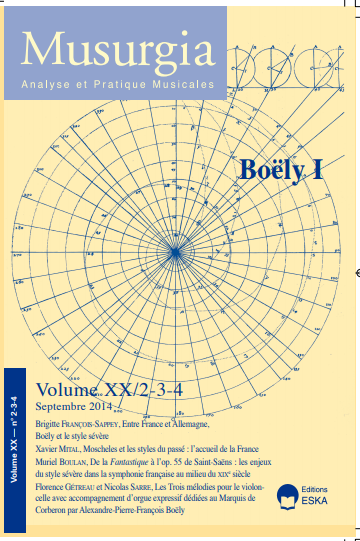Muriel BOULAN, From the Fantastique to Saint-Saëns’ op. 55: stakes of the strict style in the mid-19th-century French symphony
DOI:
https://doi.org/10.54695/mu.20.02-03-04.1952Abstract
The inherent polyphonic wealth of the symphony makes the genre naturally propitious to contrapuntal unfoldings. From this point of view, the permanence of imitations, canons, invertible counterpoint and other melodic superpositions in the
French symphonies of Boëly’s time is in line with the Viennese masters of the
second half of the 18th century, while their proximity to moments of greater vocality corresponds to a more typically national ideal. Evidencing these manifestations of
strict style gives the occasion to confront the contrapuntal writing as described in
treatises and a freer writing more adapted to an orchestral thought of large scope.
Even more, the particular figure of the fugato, by its constant presence in the
corpus, invites to question its rhetoricity after 1830. From Berlioz to the young
Saint-Saëns, with Félicien David, Reber, Louise Farenc, Gounod or Bizet, all resort
at least once in their symphonies to the principles of fugue. Narrative and expressive power with Berlioz, surprise and renewal of a slow movement with Gounod
and Bizet, demonstration of compositional knowledge or renewed appropriation of
the strict techniques of fugue, the choice of the fugato goes beyond a mere need to
renew the musical discourse. Putting these sections and their positioning in perspective, studying the conception of the subjects, the layout of the entries and their
instrumental treatment allows a reevaluation of the structural stakes of these passages and their significance at a wider level of the composition.







